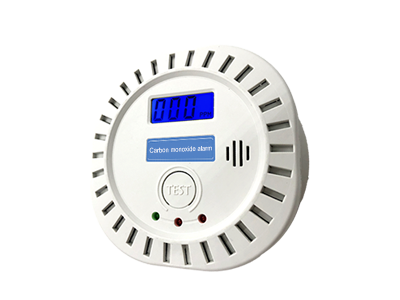How a gas detector works.
Gas detection systems are a safety technology best used to protect worker lives and keep factories safe. Gas detection systems are designed to sense hazardous gas vapor concentrations, triggering alarms and beam light signals to activate countermeasures to avoid danger to employees, assets and the environment. They are an important tool in determining whether hazardous gas levels have been reached and the source of leaks in the surrounding environment. Various gas detectors are available for domestic, commercial and industrial use. The goal here is to grasp the mechanisms and applications of gas detectors to our advantage.
Gas detectors use sensors to measure the concentration of various gases in the atmosphere. The sensor serves as a reference point and scale, and when a chemical reaction caused by a specific gas occurs, a measurable current is generated. Sensors will monitor these currents and alert users to safety when the gas approaches harmful amounts.

Combustible gas detection
Catalytic Sensor: This technology is used to detect combustible gases such as hydrocarbons and it uses the science of catalytic oxidation to do its job. The sensor of this type of detector is primarily designed with platinum treated coils. When the combustible gas comes into contact with the catalytic surface area, it is oxidized and the heat released changes the wiring resistance. Bridge circuits are often used to indicate resistance changes.
Infrared Sensors: These sensors are also known as infrared detectors. Infrared sensors detect combustible gases, especially hydrocarbon vapors, through a transmitter and receiver system. Typically, the transmitter is the light source and the receiver is the light detector. If gas is present in the optical path, it will trigger interference with the optical transmission power between the transmitter and receiver. The changing state of light determines whether and what type of gas is present. They can determine the presence of gas and specify the type of gas.
Infrared sensors use light-emitting transmitters and receivers to sense when gas is present. It interferes with the transmission of light and sounds an alarm.
Toxic gas detection
Electrochemical sensors or batteries: They are most commonly used to detect toxic gases such as carbon monoxide (CO 2 ), chlorine (Cl 2 ), and nitrogen oxides (NO x ). When gas is sensed, they act through electrode signals. This process is accomplished by allowing the gas to diffuse through the porous membrane to the electrodes where it is oxidized or reduced. Typically, these types of detectors are very sensitive and send a warning signal through an electrical current. Different manufacturers produce these detectors with digital displays. Electrochemical gas detectors are used in various environments such as oil refineries, gas turbines, chemical plants, underground gas storage facilities, etc.


Fixed CO2 gas sensor
(1) High-definition LCD color screen display, industrial-grade high-definition interface, intuitive display with 320*240 resolution;
(2) Multi-machine selection of alarm controller, rich in optional external control ports, easy to use, sound and light alarm;
(3) Waterproof, dustproof, explosion-proof, anti-condensation, the shell adopts die-cast aluminum technology, IP65 waterproof;
(4) A variety of signal output, support RS485/4G/Lora and other signal output;
(5) Remote control, can claim to switch interface to view data.

Indoor CO detector – Home CO alarm clock
(1) The factory has been calibrated, without secondary calibration, with good sensitivity, repeatability and accurate measurement;
(2) High definition density display on the LED screen, the reading is clearer;
(3) convenient installation, small volume, convenient installation, does not occupy space;
(4) Low voltage consumption and low power consumption processing chip, long standby time and low voltage automatic prompt, avoid stopping work.
 : +86 155 8830 2704
: +86 155 8830 2704 : jxdziot@gmail.com
: jxdziot@gmail.com
